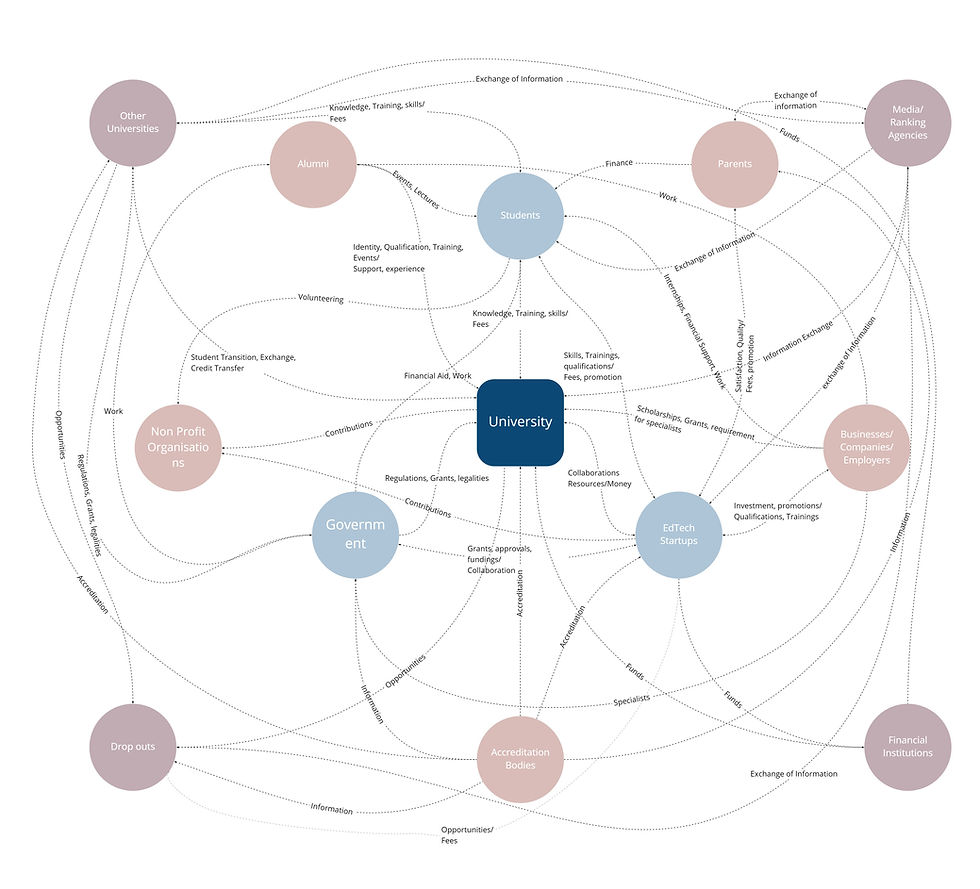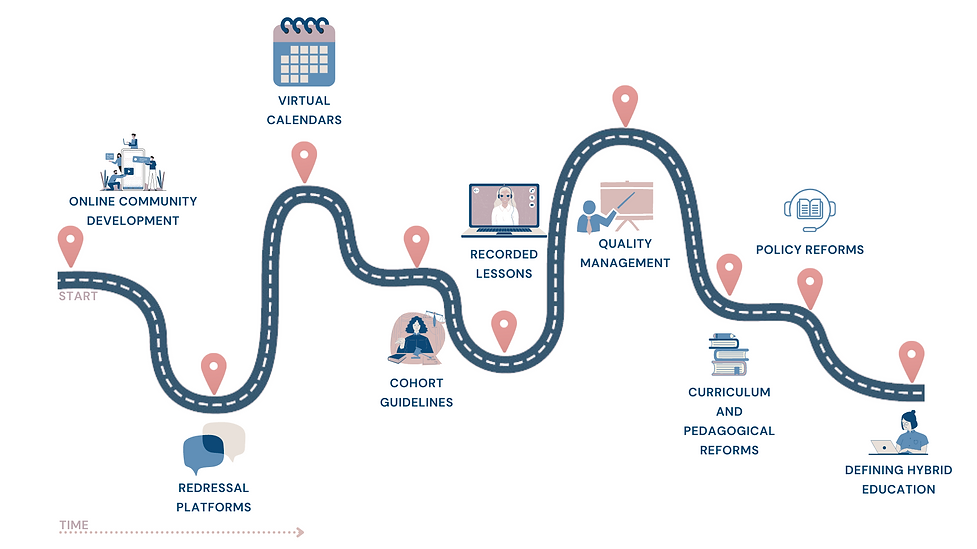
Study of Virtual Education in the context of Indian Higher Education
Off Campus
The social and developmental issues surrounding the education sector have always been layered and evolving. As new dimensions are added to the education system, such as the internet and the pandemic, virtual education has become a key player by buttressing the system. It further prods every stakeholder of the system to re-adapt and re-examine the traditional educational models in place. We a team of four went onto examine just that.
Holding higher education and institutes a key player in these changes, we ask, what is their future and question the sustainability of Virtual education itself.
DESIGN RESEARCH
OFF CAMPUS
NID
2021
What is EdTech
Overall EdTech is used to enhance human productivity through learning. Currently, it requires not only hardware technology such as books, television, charts, computers etc. but also requires softwares that directly approaches the behavioural aspect of learning. They are imperial to widen the reach, access and innovation of personalised learning. Educational technology is also implemented in the management systems of Education, how to organise the process of learning and the to structure education itself.
Role of EdTech?
EdTech has filled a lot of gaps during the pandemic, there’s a growing market for it, and it is marking a change in perspectives of how higher education can be delivered. As EdTech evolves it can contribute a higher accessibility to education, more flexibility and availability of knowledge and skills, decentralization of resources and more need-based implementation of them.
EdTech is inevitable but the question is:
what is the future of EdTech in higher education? Will College degrees become obsolete? Or a handful of successful startups will form an oligarchy, education will be privatised, only for the privileged, deepening the gap in education quality and accessibility? Is EdTech revolutionary enough? If so, where is the evidence? Or will it never be able to replace human interaction in higher education? Or a blended form of learning is the future?
Understanding the Stakeholders in Higher Education
Although we spoke to and got in touch with major stakeholders in the system, we divided our understanding of stakeholders into two parts:
1. External stakeholders (outside of the university setting)
2. Internal stakeholders (Inside of university setting)
We primarily sampled and spoke to the internal stakeholders and based our primary research on that.

Internal Stakeholders and Research Sampling
.png)
Primary Research tools used
1. Unstructured Student Interviews
2. Expert Interviews
3. Administration Interviews
4. Faculty interviews
5. Survey
6. Netnography
7. Data Visualisation exercise: Focus Group
8. Experience Prototyping Workshop: Design Your Own Online Classroom
9. Interaction Mapping Workshop
Design Directions
Through our overall research, we traversed a myriad of dimensions of EdTech and online education. Exploring the subject with the three major stakeholders of higher education in institutes, led us to ideate immediate as well long term design directions that can be explored and detailed further
.png)